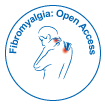A Multi-Disciplinary Approach to the Fibromyalgia Patients is always Needed
Received: 18-Sep-2015 / Accepted Date: 20-Sep-2015 / Published Date: 25-Sep-2015
4792Editorial
It is for me a great pleasure, to greet and welcome to all the readers and future contributors to this new digital Medical Journal called “Fibromyalgia”, edited online and in open access way.
Also I want to welcome to all the future readers interested in the study and understanding of the current status of this frequent, complex and very interesting multidisciplinary disease both for diagnostic and therapeutic approaches.
It has been assembled an excellent Editorial Committee composed of a selected group of experts in the different processes, from several countries, which will evaluate the works received with great scientific rigor, following the peer review system.
The Fibromyalgia syndrome is mainly classified inside the Rheumatology and the Chronic Pain clinics and it is very common disease throughout the world that usually presents a chronic continuous or relapsing clinical course that requires regular checks for proper handling. The affected patients present frequent exacerbations or by the course of the disease itself or in conjunction with associated complications, which represent a common reason for the frequent visits performed to the hospital and also to medical consultations for relieving their pain and associated disablement.
The main objectives of this new Medical Journal are to disseminate the knowledge and the scientific achievements related to this very complex and difficult disease, presenting through the study and analysis of well-designed series of cases, the results of many clinicians and researchers to present their clinical experiences and their studies on the different aspects of this intriguing disease.
Fibromyalgia (FM) can be defined as a main central pain disorder, that is somewhat controversial and seems to involve altered afferent processing, resulting in augmentation of peripheral stimuli, especially the nociceptive types.
The “core” symptoms seen in FM and many other central sensitization disorders, include the presence of of varied clinical presentation forms, such as multifocal pain, fatigue, insomnia, cognitive/memory problems, and psychological distress.
However, FM patients may experience a multitude of other associated symptoms, including dysesthesias, stiffness, poor balance, oral/ocular symptoms (eg., keratoconjunctivitis sicca), headaches, sexual dysfunction, and impaired physical function, between others.
Patients complaining of pain or fatigue, in the absence of known physical diseases, constitute a high percentage of those seeking general medical care. Depending upon the type of physician/specialist consulted, those individuals may receive disease labels, that range from an implied psychological origin such as somatoform or psychosomatic disease, or to a presumed physical disease, such as fibromyalgia. All these conditions have common, overlapping features that usually consist of both fatigue and pain, and, in the absence of definitive objective confirmation, might be best classified under one heading such as “somatic symptom disorder”. Management of these disorders is challenging.
Fibromyalgia is the currently preferred term for the presence of widespread musculoskeletal pain, typically accompanied by other symptoms such as fatigue, memory problems, and sleep and mood disturbances, for which no alternative cause can be identified. In the last few decades, there was some doubt about whether there was an "organic basis", for these related conditions, but today there is irrefutable evidence from brain imaging and other techniques that this condition has strong biological underpinnings, even though psychological, social, and behavioral factors, that clearly play prominent roles in some patients. The pathophysiological hallmark is a sensitized or hyperactive central nervous system that leads to an increased volume control or gain on pain and sensory processing. This condition can occur in isolation, but more often it co-occurs with other conditions now being shown to have a similar underlying pathophysiology (eg., irritable bowel syndrome, celiac disease, nonceliac gluten sensitivity, interstitial cystitis, and tension headache, between other diseases) or as a comorbidity, in individuals with diseases characterized by ongoing peripheral damage or inflammation (eg., autoimmune disorders and osteoarthritis).
In the latter instance, the term centralized pain connotes the fact that in addition to the pain that might be caused by peripheral factors, there is superimposed pain augmentation occurring in the central nervous system. It is important to recognize this phenomenon (regardless of what term is used to describe it) because individuals with centralized pain do not respond nearly as well to treatments that work well for peripheral pain (surgery and opioids) and preferentially respond to centrally acting analgesics and non-pharmacological therapies.
This new Fibromyalgia Journal therefore, presents a clear commitment to service and scientific information to all medical specialties, not only from Rheumatology, but also from all other fields related to the care and continuous attendance to thse patients worldwide and look forward to a positive and appropriate response by the majority of authors and future readers interested on the improve their knowledge and experiences on their diagnose, treatment and pathogenic aspects.
The Editorial team will spare no efforts to try to get it. Thank you all of you in advance, for your help and active cooperation in the near future.
Citation: Rodrigo L (2015) A Multi-Disciplinary Approach to the Fibromyalgia Patients is always Needed. Fibrom open 1: e101.
Copyright: ©2015 Rodrigo L. This is an open-access article distributed under the terms of the Creative Commons Attribution License, which permits unrestricted use, distribution, and reproduction in any medium, provided the original author and source are credited.
Share This Article
Open Access Journals
Article Usage
- Total views: 14263
- [From(publication date): 10-2016 - Apr 04, 2025]
- Breakdown by view type
- HTML page views: 9739
- PDF downloads: 4524
